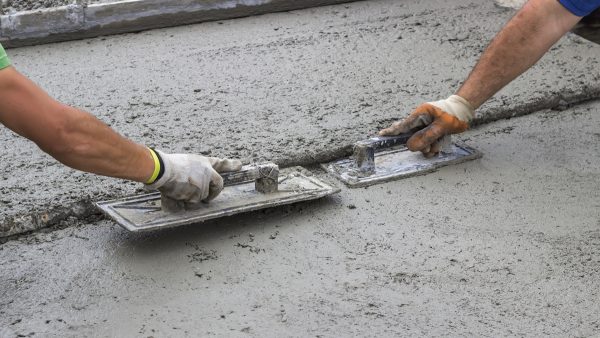How long does it take concrete to dry after a leak?

If you’re dealing with the aftermath of a slab leak or water infiltration, you need to dry out your concrete completely. Even if it’s dry on the surface, there may be layers beneath that need time to air out. Let’s explore how long it takes for concrete to dry after a leak.
How to dry concrete after a leak
First, make sure the source of the leak is no longer producing water. If the water comes from a leaking pipe, cut off the water supply to the leak so you can properly dry out the concrete.
From there, you can remove freestanding water on the concrete with mops, towels, wet-dry vacs, or any other absorbent material. If you have furniture, rugs or other items on the floor, you may want to relocate them until the concrete is fully dried.
Use air circulation to continue drying the concrete. Simply opening the windows may be sufficient in some buildings, but for others, fans and dehumidifiers work best. These machines pump air in and filter moisture out of the room to create a dryer environment.
As a last resort, professionals may use a heat drying technique to dry concrete after a leak.
Drying times vary based on the leaks
There is no way to predict how long it takes for concrete to dry because it depends on the extent of the leak. A small surface leak may dry in a few hours, but a widespread leak may take days to resolve. If the leak source is not cut off, the concrete will need continual drying efforts.
Address the cause of the leak to prevent future damage
No matter how small or large the leak is, it needs to be addressed quickly. Water damage spreads fast, and the cost of repair goes up accordingly. Invest in routine building inspections and leak detection services to monitor your building materials, and explore preventative measures to protect the structure. Joint sealing, foundation waterproofing, and concrete repair can go a long way in preserving your property.
